Birding at Northwind Lodge
List of species:
Regular – Expected to occur every year (225 species)
Casual – Not expected to occur every year but will occur irregularly (45 species)
Season Status
Migrant – Occurs as a migrant in spring and/or fall. Timing of migration varies by species group. Overall, spring migration can occur from late March (eagles) through early June (some warblers) and fall migration from mid-July (shorebirds) through December (finches). The bulk of the passerine (songbirds) spring migration is from mid-April through late May and the fall migration from mid-August through September.
Winter – Occurs during the winter season: December, January, February
Summer – Occurs during the breeding season that for passerines is June and July.
Some species may start the breeding season as early as April. Many summer resident species are also migrants since their breeding ranges extend far north of Minnesota.
Note: Although a species may occur in all seasons, very few are truly permanent residents, meaning occurring in the same territory year round. The list includes both grouse species, pigeon, great horned and barred owl, downy, hairy and pileated woodpecker, gray and blue jay, raven, both chickadees, red-breasted nuthatch, house finch and house sparrow. Goshawk and other owls may also be permanent residents.
General Breeding Habitat:
The terms used are general and just descriptive; no habitat scheme is utilized. The national forest is a mosaic of many different habitat types. It is heavily forested with about 90% of the land in natural vegetation, either forest, shrubland (including cutover), or bog/marsh/fen. About 9% of the national forest is water and only 1% is developed (fields and towns which include the cities of Ely, Hoyt Lakes and Grand Marais).
The forest is principally made up of 8 species of conifer trees and 11 of deciduous (hardwood) trees plus 12 tall shrubs and minor trees. The trees commonly occur in mixtures of 2 to 6 species per stand and stand patches vary in size and gradations across the landscape. The resulting forest is very diverse in composition, age and patch pattern which provides many diverse niches for breeding species. The dominant upland forest types are aspen/birch/spruce/fir (59%), red and white pine (8%), jack pine (8%) and northern hardwoods (3%); the lowland forest types are black spruce/tamarack (17%), cedar (3%) and lowland hardwoods (1%).
Breeding Abundance (163 species):
The abundance categories are based on monitoring across the whole forest and represent relative population numbers for this large area rather than the ease of finding or seeing species. The national forest is fortunate to have two sources of monitoring data:
- North American Breeding Bird Survey (http://www.mbr-pwrc.usgs.gov). There are five routes completely in the forest plus four partly; two routes have been run continuously since the early 1970s. The five routes are Lockport, Sawbill Landing, Crane Lake, Sawbill Camp, and Jordan; the partial routes are Hovland, Hart Lake, Babbitt, and Glendale.
- Breeding Bird Monitoring in Great Lakes National Forests (http://www.nrri.umn.edu/mnbirds).
For the Superior National Forest this program includes 15 years (1991-2005) of point count data on 164 stands stratified randomly across the forested land (excluding lakes, fens, marshes). For this checklist the data from these two programs was combined into five abundance categories: Abundant (8 species); Common (25 species); Uncommon (35 species); Rare (36 species); and Very Rare (59 species). The abundant and common classes together make up about 90% of the total record of individuals. Some species are rare because of lack of habitat; other because they are at the edge of their range. The accuracy of this scheme is best for passerines that breed in forested habitats.
| Image |
|
Migrant |
Win |
Sum |
Habitat |
Abundance |
|
Hawks & Eagles |
|
|
|
|
|
 |
Osprey |
X |
|
X |
lake; swamp |
rare |
 |
Bald Eagle |
X |
X |
X |
lake; big pines |
rare |
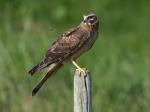 |
Northen Harrier |
X |
|
X |
marsh |
very rare |
 |
Sharp-shinned Hawk |
X |
|
X |
mixed forest |
uncommon |
 |
Cooper’s Hawk |
X |
|
X |
mixed forest |
very rare |
 |
Northern Goshawk |
X |
|
X |
mixed forest |
very rare |
 |
Broad-winged Hawk |
X |
|
X |
mixed forest |
uncommon |
 |
Red-tailed Hawk |
X |
X |
X |
forest edge |
rare |
 |
Rough-legged Hawk |
X |
X |
|
|
|
 |
Golden Eagle |
X |
|
|
|
|
|
Falcons |
|
|
|
|
|
 |
American Kestrel |
X |
|
X |
forest edge |
rare |
 |
Merlin |
X |
|
X |
mixed forest |
rare |
 |
Peregrine Falcon |
X |
|
X |
cliff |
very rare |
|
Rails, Gallinules, Coots |
|
|
|
|
|
 |
Virginia Rail |
X |
|
X |
marsh |
very rare |
 |
Sora |
X |
|
X |
marsh |
very rare |
 |
American Coot |
X |
|
|
|
|
|
Cranes |
|
|
|
|
|
 |
Sandhill Crane |
X |
|
X |
fen; bog |
very rare |
|
Plovers |
 |
Killdeer |
X |
|
X |
field; gravel pit |
very rare |
|
Sandpipers & Phalaropes |
|
|
|
|
|
 |
Greater Yellowlegs |
X |
|
|
|
|
 |
Lesser Yellowlegs |
X |
|
|
|
|
 |
Solitary Sandpiper |
X |
|
X |
pond |
very rare |
 |
Spotted Sandpiper |
X |
|
X |
stream; lake |
uncommon |
 |
American Woodcock |
X |
|
X |
mixed forest |
rare |
 |
Wilson’s Phalarope |
X |
|
X |
marsh |
very rare |
|
Gulls |
|
|
|
|
|
 |
Bonaparte’s Gull |
X |
|
|
|
|
 |
Ring-billed Gull |
X |
|
X |
island |
very rare |
 |
Herring Gull |
X |
X |
X |
island |
uncommon |
 |
Thayer’s Gull |
X |
X |
|
|
|
 |
Glaucous Gull |
X |
X |
|
|
|
| Image |
|
Migrant |
Win |
Sum |
Habitat |
Abundance |
|
Pigeons & Doves |
|
|
|
|
|
 |
Rock Pigeon |
X |
X |
X |
town |
very rare |
 |
Mourning Dove |
X |
|
X |
town |
very rare |
|
Cuckoos |
|
|
|
|
|
 |
Black-billed Cuckoo |
X |
|
X |
mixed forest |
rare |
 |
Yellow-billed Cuckoo |
X |
|
X |
hardwood forest |
very rare |
|
Owls |
|
|
|
|
|
 |
Great Horned Owl |
X |
X |
X |
forest edge |
very rare |
 |
Snowy Owl |
X |
X |
|
|
|
 |
Northern Hawk-Owl |
X |
X |
X |
bog; forest |
very rare |
 |
Barred Owl |
X |
X |
X |
mixed forest |
rare |
 |
Great Gray Owl |
X |
X |
X |
bog; forest |
very rare |
 |
Long-eared Owl |
X |
|
X |
mixed forest |
very rare |
 |
Short-eared Owl |
X |
|
|
|
|
 |
Boreal Owl |
X |
X |
X |
forest; bog |
very rare |
 |
Northern Saw-whet Owl |
X |
X |
X |
mixed forest |
rare |
|
Nighthawks & Nightjars |
|
|
|
|
|
 |
Common Nighthawk |
X |
|
X |
ledge; town |
rare |
 |
Whip-poor-will |
X |
|
X |
mixed forest |
very rare |
|
Swifts |
|
|
|
|
|
 |
Chimney Swift |
X |
|
X |
town; forest |
very rare |
|
Hummingbirds |
|
|
|
|
|
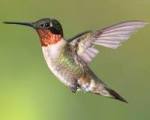 |
Ruby-throated Hummingbird |
X |
|
X |
forest edge |
rare |
|
Kingfishers |
|
|
|
|
|
 |
Belted Kingfisher |
X |
|
X |
stream; bank |
uncommon |
|
Woodpeckers |
|
|
|
|
|
 |
Red-headed Woodpecker |
X |
|
X |
open forest; burn |
very rare |
 |
Yellow-bellied Sapsucker |
X |
|
X |
mixed forest |
uncommon |
 |
Downy Woodpecker |
X |
X |
X |
mixed forest |
uncommon |
 |
Hairy Woodpecker |
X |
X |
X |
mixed forest |
uncommon |
 |
American Three-toed Woodpecker |
X |
X |
X |
dying forest |
very rare |
 |
Black-backed Woodpecker |
X |
X |
X |
dying forest |
very rare |
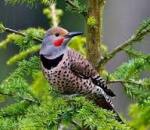 |
Northern Flicker |
X |
|
X |
forest edge |
common |
 |
Pileated Woodpecker |
X |
X |
X |
mixed forest |
uncommon |
|
Tyrant Flycatchers |
|
|
|
|
|
 |
Olive-sided Flycatcher |
X |
|
X |
open forest; burn |
rare |
 |
Eastern Wood-Pewee |
X |
|
X |
mixed forest |
uncommon |
 |
Yellow-bellied Flycatcher |
X |
|
X |
conifer forest |
common |
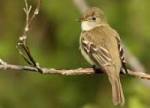 |
Alder Flycatcher |
X |
|
X |
shrub; wetland |
common |
 |
Least Flycatcher |
X |
|
X |
hardwood forest |
common |
 |
Eastern Phoebe |
X |
|
X |
forest edge |
rare |
 |
Great Crested Flycatcher |
X |
|
X |
mixed forest |
rare |
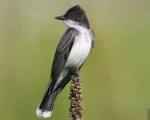 |
Eastern Kingbird |
X |
|
X |
field; pond |
rare |
|
Shrikes |
|
|
|
|
|
 |
Northern Shrike |
X |
X |
|
|
|
|
Vireos |
|
|
|
|
|
 |
Yellow-throated Vireo |
X |
|
X |
hardwood forest |
very rare |
 |
Blue-headed Vireo |
X |
|
X |
conifer forest |
uncommon |
 |
Warbling Vireo |
X |
|
X |
hardwood forest |
very rare |
 |
Philadelphia Vireo |
X |
|
X |
hardwood forest |
very rare |
 |
Red-eyed Vireo |
X |
|
X |
mixed forest |
abundant |
| Image |
|
Migrant |
Win |
Sum |
Habitat |
Abundance |
|
Jays & Crows |
|
|
|
|
|
 |
Gray Jay |
X |
X |
X |
forest; bog |
uncommon |
 |
Blue Jay |
X |
X |
X |
forest; town |
common |
 |
American Crow |
X |
X |
X |
field; town |
uncommon |
 |
Common Raven |
X |
X |
X |
forest; cliff |
uncommon |
|
Larks |
|
|
|
|
|
 |
Horned Lark |
X |
|
|
|
|
|
Swallows |
|
|
|
|
|
 |
Purple Martin |
X |
|
X |
lakeshore |
very rare |
 |
Tree Swallow |
X |
|
X |
pond; lakeshore |
rare |
 |
Northern Rough-winged Swallow |
X |
|
X |
bank; lakeshore |
very rare |
 |
Bank Swallow |
X |
|
X |
bank; gravel pit |
very rare |
 |
Cliff Swallow |
X |
|
X |
building |
very rare |
 |
Barn Swallow |
X |
|
X |
cliff; building |
rare |
|
Chickadees & Titmouse |
|
|
|
|
|
 |
Black-capped Chickadee |
X |
X |
X |
mixed forest |
common |
 |
Boreal Chickadee |
X |
X |
X |
conifer forest;bog |
very rare |
|
Nuthatches |
|
|
|
|
|
 |
Red-breasted Nuthatch |
X |
X |
X |
mixed forest |
common |
 |
White-breasted Nuthatch |
X |
X |
X |
hardwood forest |
very rare |
|
Creepers |
|
|
|
|
|
 |
Brown Creeper |
X |
|
X |
mixed forest |
uncommon |
|
Wrens |
|
|
|
|
|
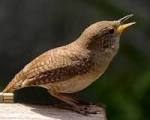 |
House Wren |
X |
|
X |
forest edge |
rare |
 |
Winter Wren |
X |
|
X |
mixed forest |
common |
 |
Sedge Wren |
X |
|
X |
field; fen |
rare |
 |
Marsh Wren |
X |
|
X |
marsh |
very rare |
|
Kinglets |
|
|
|
|
|
 |
Golden-crowned Kinglet |
X |
|
X |
mixed forest |
common |
 |
Ruby-crowned Kinglet |
X |
|
X |
conifer forest; bog |
uncommon |
|
Thrushes |
|
|
|
|
|
 |
Eastern Bluebird |
X |
|
X |
field; forest burn |
very rare |
 |
Townsend’s Solitaire |
X |
X |
|
|
|
 |
Veery |
X |
|
X |
mixed forest |
abundant |
 |
Gray-cheeked Thrush |
X |
|
|
|
|
 |
Swainson’s Thrush |
X |
|
X |
mixed forest |
common |
 |
Hermit Thrush |
X |
|
X |
mixed forest |
common |
 |
Wood Thrush |
X |
|
X |
hardwood forest |
very rare |
 |
American Robin |
X |
X |
X |
forest; town |
abundant |
 |
Varied Thrush |
X |
|
|
|
|
|
Mockingbirds & Thrashers |
|
|
|
|
|
 |
Gray Catbird |
X |
|
X |
forest edge |
rare |
 |
Brown Thrasher |
X |
|
X |
forest edge |
very rare |
|
Starlings |
|
|
|
|
|
 |
European Starling |
X |
X |
X |
field; town |
rare |
|
Pipits |
|
|
|
|
|
 |
American Pipit |
X |
|
|
|
|
|
Waxwings |
|
|
|
|
|
 |
Bohemian Waxwing |
X |
X |
|
|
|
 |
Cedar Waxwing |
X |
X |
X |
forest edge |
common |




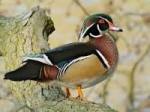



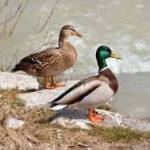




















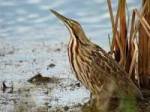






























































































































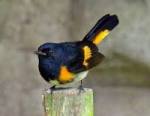









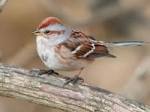




































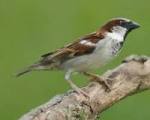























You must be logged in to post a comment.